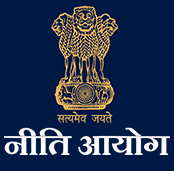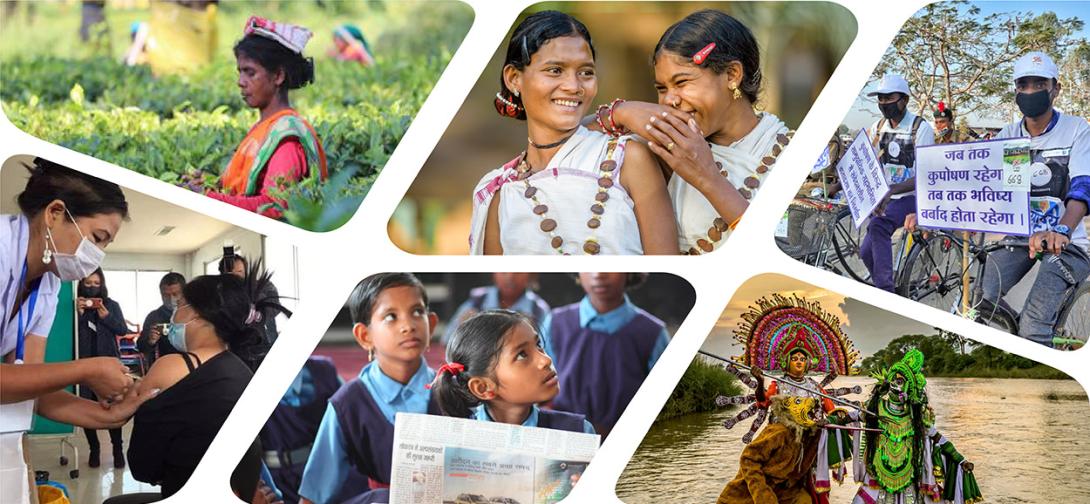Vidyashakti: Transforming Women's Lives through Education
Located a couple of hours away from Guwahati is the picturesque district of Goalpara. The name of the district is said to have derived from 'Gwaltippia' meaning village of the milk men. Goalpara surrounded by West and East Garo Hills districts of Meghalaya on the South, Kamrup District on the East, Dhubri District on the West and mighty Brahmaputra runs all along the North of the district.
Stretching over 1800 square kilometers , the district has 837 villages in its purview. Enriched with natural beauty , minerals and archaeological treasures , Goalpara is the home of large number of ethnic and religious communities. Along with a sizeable section of the Muslim population, the district is home to many ethnic communities such as the Rabha, the Bodo, the Garo, and the Koch Rajbongsi.The district was included in the Aspirational Districts Programme on the basis of relatively poorer endownment of physical resources, lack of infrastructure networks, poor social capital, low standards of health, nutrition , skill and above all demotivation amogst the inhabitants due to prolonged years in poverty and deprivation.The economy of Goalpara district is primarily agrarian and the district is also industrially backward. The district is landlocked with poor transportation and communication facilities. As per the Socio-economic Caste Census (SECC 2011) , almost 67% of households are landless and earns their living by engaging in casual manual labour.
Ensuring Female (15+ Age Group) Education has become one of the key development objectives in the Aspirational Districts. More recently, the concept of empowerment has been tied to the community demand and awareness. As per 2011 Census, the literacy rate in the district (67.3% ) is lower than that of the state average of 72.19 percent. More significantly, the female literacy rate (63.13%) is lower than male literacy rate (72%) in both rural and urban areas. This low level of literacy and consequent educational attainment has its bearing on the employment and livelihood opportunities of the citizens. Among the religious groups in the rural area of the district, Hindus and Christians have higher literacy rates than that of the Muslims. The Muslim female literacy rate in rural areas is more deplorable compared to the average female literacy rate of the district as well as the rural females of the other two important religious categories. The main reason for educational backwardness of Muslims is poverty, due to which, children are often forced to drop out after the first few classes. This is particularly true for Muslim girls. Little children are expected to provide for their families by working in small workshops or as domestic help or by looking after their siblings while their mothers go to work to earn bread for the family. (Sachar Committee Report, 2006). The opportunity costs involved in sending children to school is too high for poor and illiterate parents. .
While 35% of Indian women are still illiterate, an extensive and focused efforts on their literacy and upliftment is the need of the hour. Understanding the exigency of the issue ,under the leadership of Smt. Varnali Deka , IAS the District Administration along with Adult Education Department and support from Piramal Foundation undertook this mammoth task of identifying and literating the females in Goalpara.
The initiative was named ‘VIDYASHAKTI’ and was piloted in Rangjuli block of Goalpara district.
The district administration and Adult Education Department had initiated and strategized a 3 month long intensive programme to reach 100% Literacy in Rangjuli Development Block of Goalpara District in multiple phases.In the first phase , a district committee was formed to monitor the progress of the programme followed by phase two in which a household level survey was conducted across all the nine gram panchayats to identify the female illiterates. Phase three and four constituted of community mobilization , selection of instructors and formation of adult learning centres. Phase five was end line evaluation and declaration of the achievement.
The program was designed in such a manner that it catered to the diverse population of Goalpara. The learning material was developed not only in Assamese but also in Bodo and Garo language and a total 690 instructors were engaged to teach and empower their own communities. The programme was well received by the community especially the elderly women who were happy to receive the opportunity to read and write so much later in their lives.
On 8th September ‘19 , International Literacy Day the results were declared and all the efforts put in by district administration and the instructors paid off. As a result of this initiative , the Rangjuli block achieved an average of 87 % . Out of 6895 illiterate females in block 5990 passed the evaluation test.
The delivery of quality services remains the responsibility of the government, and availing these provisions is also driven by community awareness and demands . Goalpara displays a significantly high potential for delivering quality education to its residents, both young and old. If the district is able to sustainably replicate this innovative practice across the district, especially in the Char areas that currently remain inaccessible during monsoons due to severe flooding by Brahmaputra and its tributaries,then it may serve as an example of last mile delivery of education which could be replicated in other districts across the country.
*Anveshi Gupta is a Young Professional, NITI Aayog. Views expressed are personal.
 National Portal Of India
National Portal Of India 







